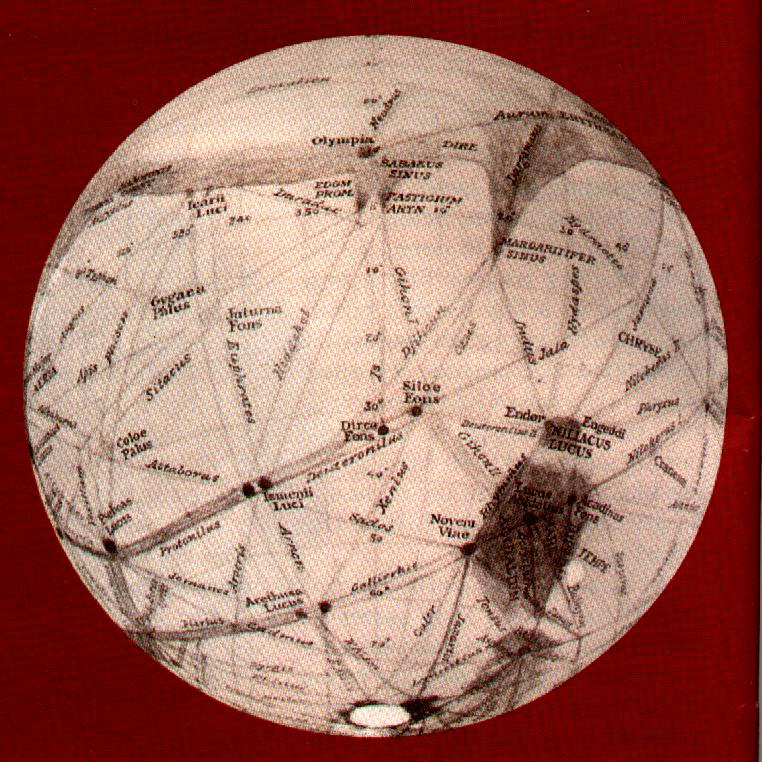

"The Real
mystery is no longer who can see them (canals) and who can't, but rather why
are they now appearing on CCD images that amateur astronomers are taking with
their telescopes." Daniel Lauderback
In his book UFOs and the Complete Evidence from Space, David Ross is able to
tell us about observations in relation to Mars which go against the typical
descriptions with which we are familiar.
From Page 61:
"A distinguished American astronomer, Percival Lowell,decided to dedicate his life to studying Mars. In 1894, he built the Flagstaff
Observatory in Arizona, which housed a 24-inch refracting telescope. By 1915, he
and his staff had charted nearly 700 canals - a precise network of large-scale
construction on Mars that channeled water from the polar ice caps. They were
straight, narrow, sometimes parallel, and at numerous locations the canals
intersected geometrically. "
The
above is a flat representation of the personal globe of Percival Lowell.
From Page 63:
"Lowell made a special expedition to Chile in 1907 and
obtained the first photographic evidence of the canals. His successor Dr. E.C.
Slipher, had better success in later years with observations from South Africa,
when camera equipment had improved considerably. The Martian canals
are seen on plates VI and XLVII in the book, The
Photographic Story of Mars, by E.C. Slipher. The edition I obtained was published by Northland Press, Flagstaff,
Arizona, in 1962."
"Now to clarify the situation regarding the canal evidence first discovered by
Schiaparelli and Lowell through their telescopic studies. It was only laid to
rest because authorities withheld official confirmation. Mariner 4 did
photograph some straight-line canals, and this was finally admitted some time
later by Dr. William Pickering, the head of Jet Propulsion Laboratory. (JPL
conducts all the planetary projects for NASA.) Dr. Clyde Tombaugh, the
scientist who discovered Pluto, also confirmed that the canals were photographed
by the 1965 probe. But officially, this type of evidence has never been released.
The public was shown computer-enhanced photographs, but the detailed originals
were in the hands of the authorities. And if the canals were filmed by that
first probe, it is a certainty that they were filmed by later Mariner and Viking
probes, yet that information has always been withheld."
From Page 71:
"Dr. Slipher assigned himself to make observations from the best location
possible- the Lamont Hussey Observatory in South Africa [The Mars Expedition].
It had the largest refracting telescope in the Southern hemisphere, and Mars
would be passing directly overhead each night during opposition. And before the
project got underway, Slipher publicly stated that if he found proof of life on
Mars, he would announce it to the world."
"The Mars Expedition took 20,000 photographs and confirmed the presence of both
the canals and vegetation. The canals did not meander at all like a river would;
they followed great circle courses, which are the shortest distance between two
points on a globe. Many planetary astronomers had speculated previously, that if
photographs showed that the canals were along great circle paths, it could be
concluded that they were the work of intelligent beings. The scientists were
getting exceptional pictures also,
because the Lowell Observatory was using a new electronic camera that could
amplify faint markings, and photograph in 1/10 of a second to prevent
atmospheric turbulence from blurring the details. One canal was found to run
straight as an arrow for 1,500 miles, something that no natural water channel
could do."